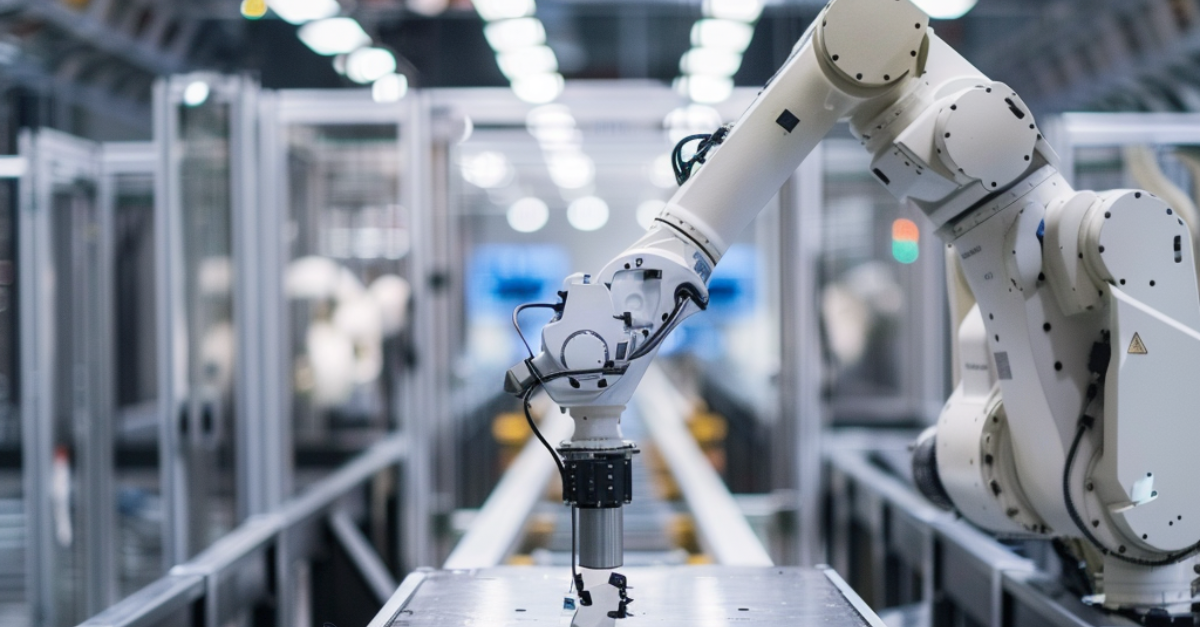Exploring Challenges and Solutions in Digital Health Devices Manufacturing
"Digital health is about creating a more patient-centric healthcare system," - Marc Benioff, the visionary CEO of Salesforce, aptly summarises the evolving landscape that has revolutionised the world of healthcare. From its humble origins in the early 1990s with the advent of electronic health records (EHRs), to the subsequent surge of innovation in the early 2000s introduced telemedicine, mobile health (mHealth), and big data analytics, promising unprecedented accessibility, convenience, and personalization in healthcare. These remarkable shifts are underscored by the global digital health market, which is valued at a staggering $330 billion in 2022, and is projected to double to an astonishing $650 billion by 2025.
As the promise of enhanced patient outcomes and empowered individuals beckons, it's easy to get lost in the allure of these devices:-
- The healthcare AI market, a testament to the fusion of technology and medicine, is poised to reach a monumental $34 billion by 2025.
- VR and AR, once relegated to the realm of science fiction, are expected to accrue a staggering $5.1 billion by 2025 in the healthcare domain alone.
- In parallel, the wearable medical device manufacturing market, embodying the epitome of personalised health monitoring, is anticipated to scale to an impressive $27.2 billion by 2023, reflecting a remarkable CAGR of 23% from 2018 to 2023.
Amidst this whirlwind of innovation, we find ourselves at the crossroads of possibility and challenge. The journey from conceptualising these digital health devices to their tangible manifestation in the market is a labyrinthine tale of resilience, resourcefulness, and unyielding dedication. We unearth the essence of an industry propelled by the promise of a healthier future, where patients truly stand at the heart of care.
Regulatory Compliance and Certification: Navigating Uncharted Waters
The world of medical devices industry is a tightly regulated landscape, and the digital health sector is no exception. In the United States, for instance, the Food and Drug Administration (FDA) oversees the approval and safety of medical devices. Navigating this intricate regulatory terrain can be daunting for manufacturers, often requiring substantial time and resources.
"Ensuring regulatory compliance is not just a hurdle; it's a vital step to guarantee patient safety and device effectiveness." - Dr. Emily Carter, Regulatory Affairs Specialist.
Obtaining necessary certifications, such as FDA approval, is a testament to a device's safety and efficacy. These certifications instil trust in both healthcare professionals and patients, underlining the importance of regulatory adherence.
Supply Chain Disruptions: Bolstering Resilience
The global pandemic brought to light the vulnerability of supply chains across industries, and digital health device manufacturing was no exception. Disruptions in the supply chain can lead to delays in production and delivery, impacting patient care and business operations.
To mitigate such risks, manufacturers are increasingly diversifying their supplier base and investing in technologies like blockchain to enhance transparency and traceability throughout the supply chain. According to a survey by Deloitte, 60% of healthcare companies are investing in supply chain risk management strategies.
Design Iterations and Prototyping: Sculpting Excellence
Digital manufacturing of health devices that embodies functionality, comfort, and aesthetics is a challenging endeavour. Design iterations and prototyping are essential to refine and perfect the device's form and function.
Rapid prototyping methods, like 3D printing, have revolutionised this process. They enable designers to create tangible prototypes quickly, facilitating faster iterations and reducing development timelines.
"Prototyping is akin to chiselling a sculpture - each iteration brings us closer to revealing the masterpiece hidden within." - Sarah Hernandez, Product Designer.
Quality Assurance and Testing: Ensuring Reliability
The reliability and safety of digital health devices are paramount. Rigorous testing is essential to identify potential flaws and vulnerabilities before the devices reach end-users.
Advanced testing techniques, such as accelerated ageing, simulate the effects of extended usage within a compressed time frame. This approach ensures that devices maintain their functionality and durability over time, enhancing their reliability and longevity.
Data Security and Privacy: Fortifying Defences
Connected digital health devices rely on the seamless exchange of patient data for accurate monitoring and analysis. However, this convenience comes with the responsibility of safeguarding sensitive patient information with these medical equipment manufacturing.
Encryption technologies play a pivotal role in ensuring data security. The deployment of robust cybersecurity measures is essential to prevent unauthorised access and data breaches.
"In the realm of digital health, protecting patient data is not just a legal obligation; it's an ethical imperative." - Dr. Michael Reynolds, Cybersecurity Expert.
Customisation and Personalisation: Striking the Balance
As patients' needs diversify, the challenge of offering customised solutions while maintaining cost-effective mass production emerges. Additive manufacturing, also known as 3D printing, empowers manufacturers to create personalised devices with efficiency and precision.
This technology enables the production of patient-specific implants, prosthetics, and even dental devices. According to a report by Allied Market Research, the global 3D printing healthcare market is projected to reach $2.3 billion by 2027.
Human-Centred Design and Usability: Pioneering Accessibility
A digital medical equipment product may boast advanced features, but if it's not user-friendly, it loses its effectiveness. Human-centred design principles prioritise the end-user experience.
User testing and iterative design play a pivotal role in achieving usability. Incorporating feedback from healthcare professionals and patients ensures that the device aligns with their needs and preferences.
"The true hallmark of a successful digital health device lies in its seamless integration into the user's life." - Dr. Laura Chen, UX Designer.
Emerging Technologies for Manufacturing Challenges: Pioneering a Revolution
In the heart of the manufacturing world, where intricacies abound and challenges seem to be as numerous as stars in the night sky, emerges a pair of technological titans - Artificial Intelligence (AI) and the Internet of Things (IoT). These digital powerhouses are not mere buzzwords; they are the driving forces that are reshaping the very foundations of how digital health devices are brought to life. So, grab your virtual hardhat, because we're about to explore how these technologies are not just reshaping, but revolutionising, the landscape of digital health device manufacturing.
1. Anticipating Hiccups with AI-powered Predictive Maintenance
Imagine a manufacturing facility where machines hum harmoniously, productivity thrives, and downtime is as rare as a blue moon. This isn't a far-off fantasy, but a reality that AI-powered predictive maintenance is crafting. AI, with its ability to crunch colossal data sets and decipher patterns invisible to the human eye, is putting an end to the age-old problem of unexpected equipment breakdowns.
Benefit
Drastic reduction in downtime, ensuring that every tick of the clock translates into more devices reaching patients and caregivers.
By foreseeing potential hiccups well before they snowball into a full-blown crisis, manufacturers are now empowered to take proactive measures. This doesn't just save time and resources but ensures that the production process flows as seamlessly as the data coursing through the AI algorithms.
2. IoT: A Symphony of Connectivity and Real-Time Monitoring
The Internet of Things, often heralded as the grand conductor of the technological symphony, is orchestrating a paradigm shift in manufacturing. When applied to the realm of digital health device production, it unveils a realm of unprecedented connectivity and real-time insights.
Benefit
Enhanced visibility across the manufacturing facility, akin to a bird's eye view, allows for swift, informed decision-making.
IoT devices, interwoven into the manufacturing fabric, breathe life into the concept of real-time monitoring. Every corner of the facility, every machine, every process is a node in this expansive network. Data streams flow ceaselessly, providing a comprehensive understanding of the manufacturing ecosystem's health.
Picture this: sensors embedded within the production line detect a subtle deviation in temperature that could potentially compromise the quality of the devices. With the speed of a digital hawk, this information is relayed to the control centre, triggering an immediate response. What could have been a silent compromise evolves into an opportunity for intervention, ensuring that the quality of the final product remains unblemished.
3. The Marvel of Integration
Yet, what elevates these technologies from the realm of mere marvels to true game-changers is their seamless integration. AI's predictive prowess, paired with IoT's real-time insights, forges a partnership that transcends the sum of its parts. Data collected by IoT devices fuels AI algorithms, allowing them to fine-tune their predictions with accuracy that borders on prescience.
Benefit
This symbiotic relationship heightens not only the accuracy of predictive maintenance but also the overall efficiency of the manufacturing process.
The implications of this synergy ripple throughout the manufacturing landscape. As downtime dwindles, productivity flourishes. As disruptions are met with instant responses, the entire manufacturing ecosystem gains resilience. As the union between AI and IoT strengthens, the vision of a manufacturing facility that dances in harmony with the digital age inches closer to reality.
Conclusion: Forging Ahead
The challenges in manufacturing digital health devices are undoubtedly intricate and multifaceted. Yet, the industry's resilience and commitment to overcoming these obstacles underscore its transformative potential.
As regulatory landscapes evolve and technology continues to advance, the digital health device manufacturing sector is poised for remarkable growth. By embracing innovation, adhering to rigorous standards, and placing patients at the centre of design, manufacturers are shaping a healthier and more connected future. With this mantra, the industry marches forward, enhancing healthcare through more and more advanced devices that redefine the possibilities of patient care.
Recent Posts








Add Comment
0 Comments